| By: Paul S. Cilwa | Viewed: 7/26/2024 Posted: 10/11/2007 |
Page Views: 7325 | |
| Topics: #Photography #Science #History #Astronomy | |||
| A handy guide for those who prefer to name their months after Native American traditions rather than those of the Vikings. | |||
Shine on, shine on harvest moon
Up in the sky
I ain't had no lovin' since
January, February, June or July.
Pretty much everyone has heard that song. But what the heck is a "harvest moon"? And what, if anything, would it have to do with a lack of "lovin'"?
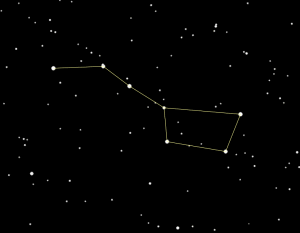
The Big Dipper seems to make one full rotation per year, when viewed at the same time of night.
As you know, the Earth takes a little more than 365 days to circle the sun. We judge this by the stars. For example, at sunset on any particular day, the handle of the Big Dipper will be in a certain position. Six months later, at sunset, the handle of the Dipper will be in the opposite position. A year from that starting point, the handle will have returned to its original position.
You also know that the Moon takes a little more than 28 days to circle all around the Earth. A lunar calendar would feature 13 months a year, but it still wouldn't come out even. The proper time for spring planting has to be judged by a solar calendar, not a lunar calendar, because Earth's seasons relate to its position relative to the Sun, and have nothing to do with the Moon.
Still, not every historical culture relied on agriculture for its livelihood; and such cultures tended to develop a lunar calendar by which they planned their rituals. One such culture was that of the Hebrews, in whose calendar Passover is located relative to the moon. (The Christian holy day of Easter comes three days after Passover, and is thus also lunar-based.)
In these calendars, months—Moon-periods—had names; but since those cultures were not yet infected with Big Religion the months were named for practical reasons, rather than to honor some god or planet. There are many variations depending on the culture, its time, and its geographic location, but here's a typical list, mostly from Native American tribal traditions:
January: Wolf moon

By January, the dead of winter had set in and packs of wolves would prowl about trying to find some nice, tender human babies to eat. The Wolf moon is a reminder that, not so long ago, this sort of thing was more of a concern than which football team would win the Rose Bowl.
February: Ice moon
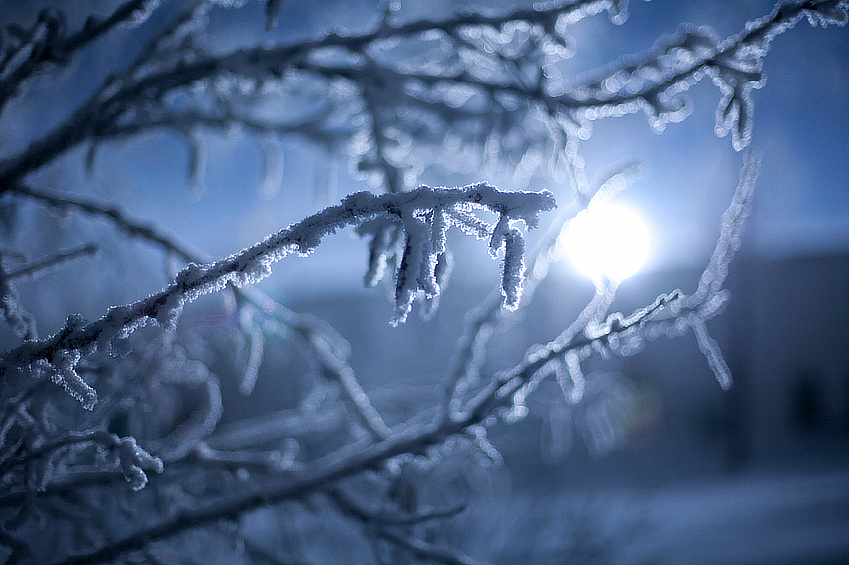
The very name of this lunar month speaks volumes as to the nature of tribal life in the pre-Columbian Northeast.
March: Storm moon
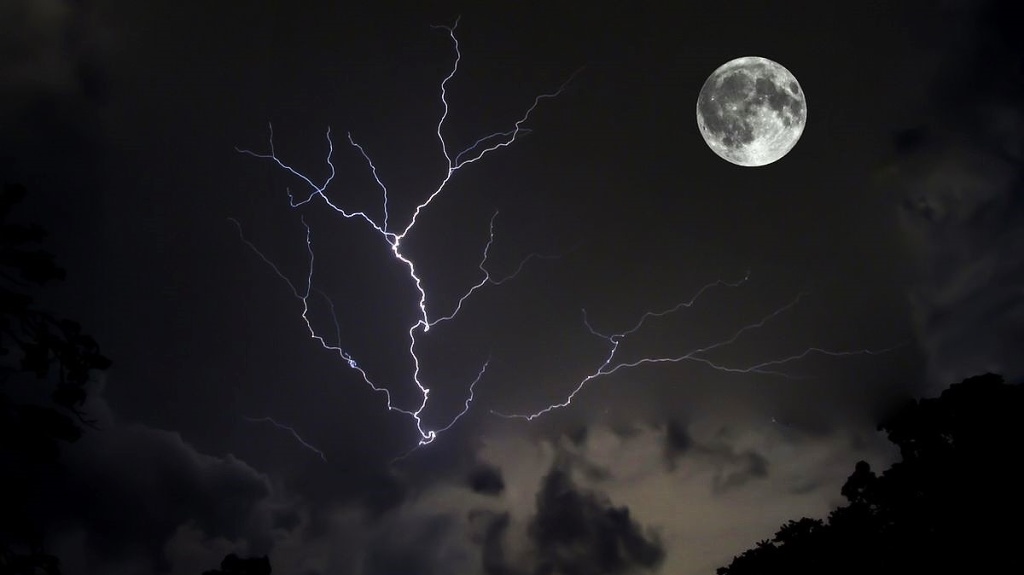
The thunderstorms of early spring—again, largely a Northeast phenomenon—give name to this month.
April: Growing moon
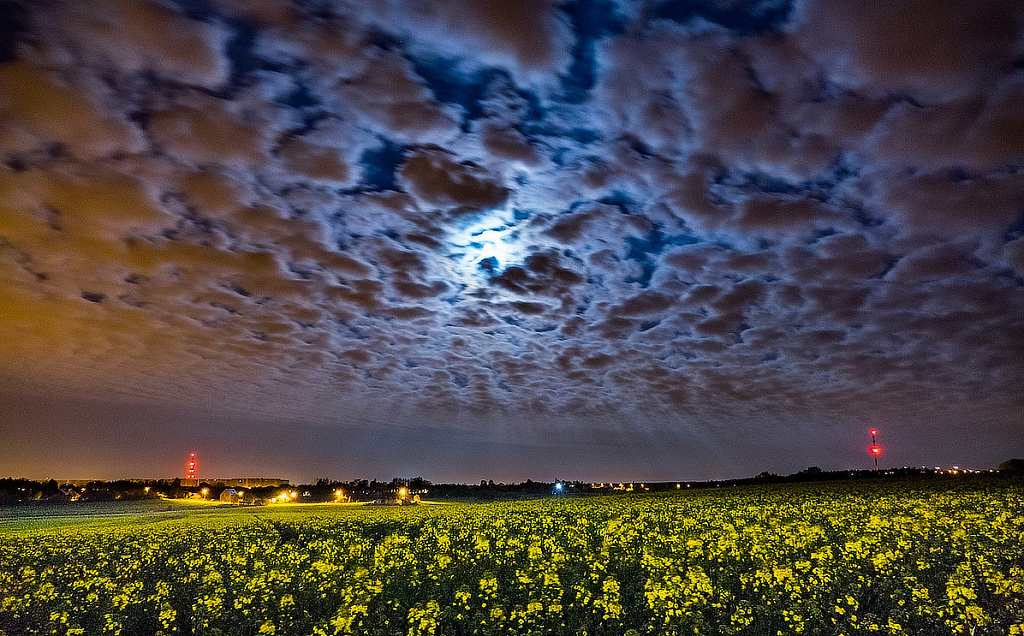
Although most Native American tribes didn't rely primarily on agriculture, they most certainly did plant crops. The name of this month reminded anyone that now would be a good time to do so.
May: Hare moon
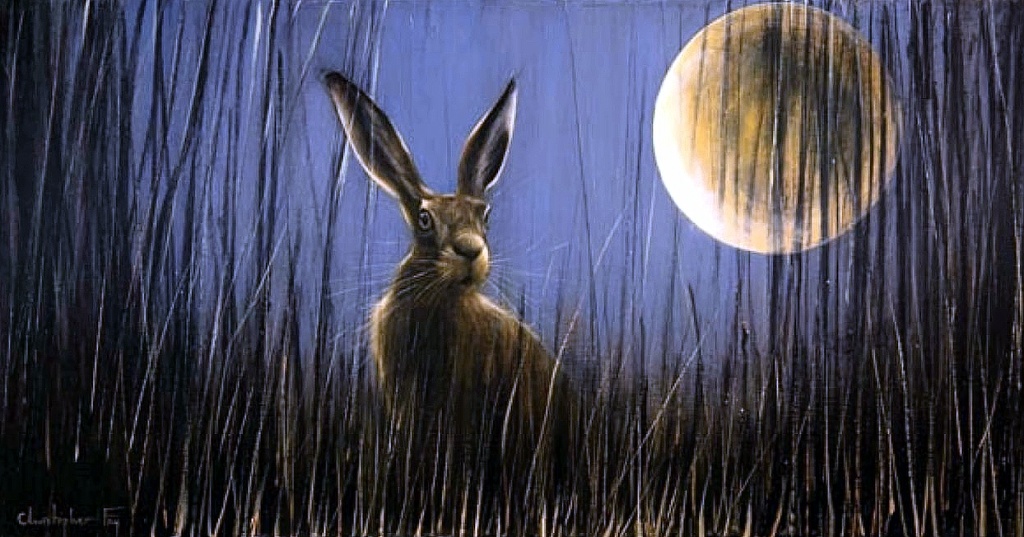
With the young plants growing from their planting 28 days earlier, rabbits—once known as "hares"—would give birth to their prodigious litters just in time to be able to feed them. This was also known to some tribes as the Flower moon.
June: Strawberry moon
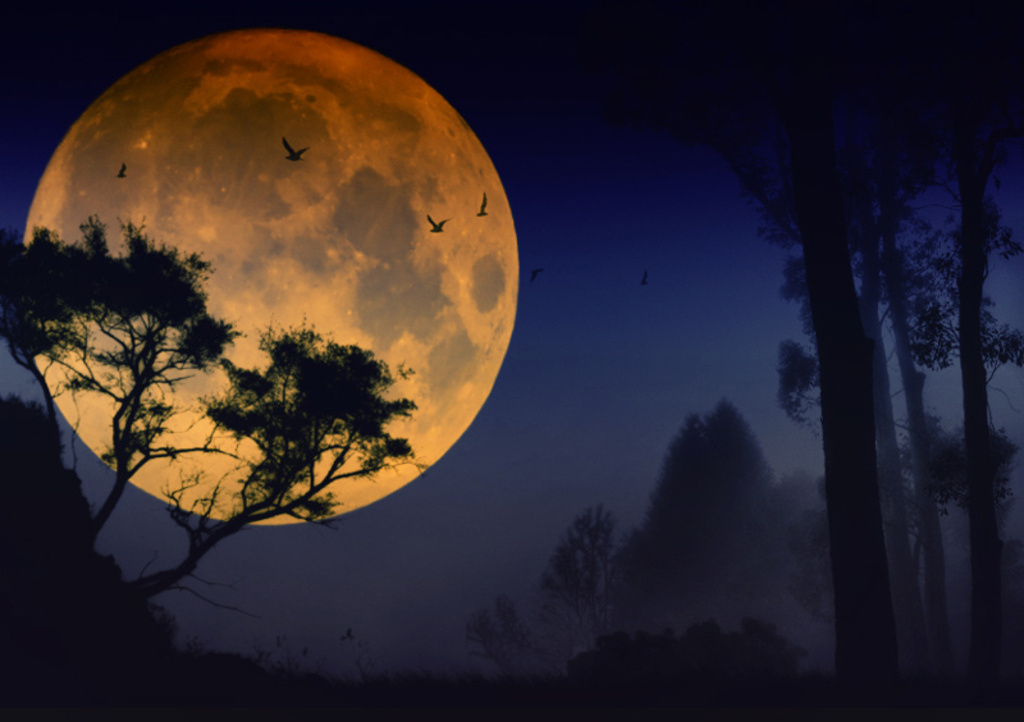
Also known as the Mead moon by those who make honey wine, this is the month for enjoying Nature's bounty while waiting for the crops to ripen.
July: Hay moon
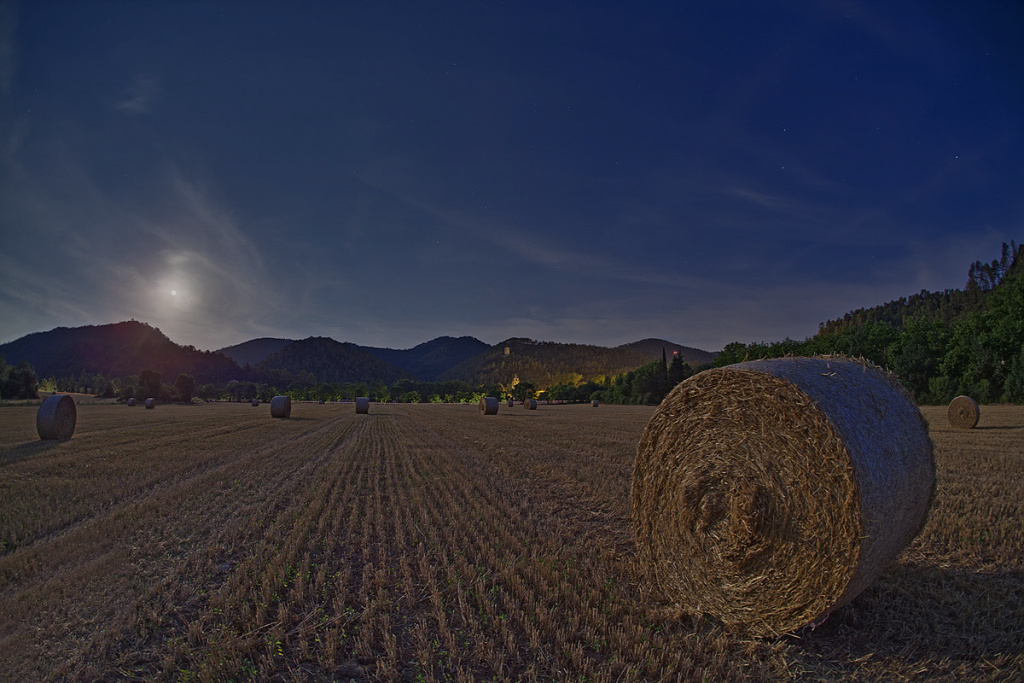
Once horses were introduced, hay became an essential staple for keeping the animals alive through the winter. Especially in the Great Plains, which were essentially seas of grass, this was the optimal time for harvesting that grass and bundling it so that it would dry properly in the Summer's heat. (Grass will rot if not dried properly.)
August: Corn moon
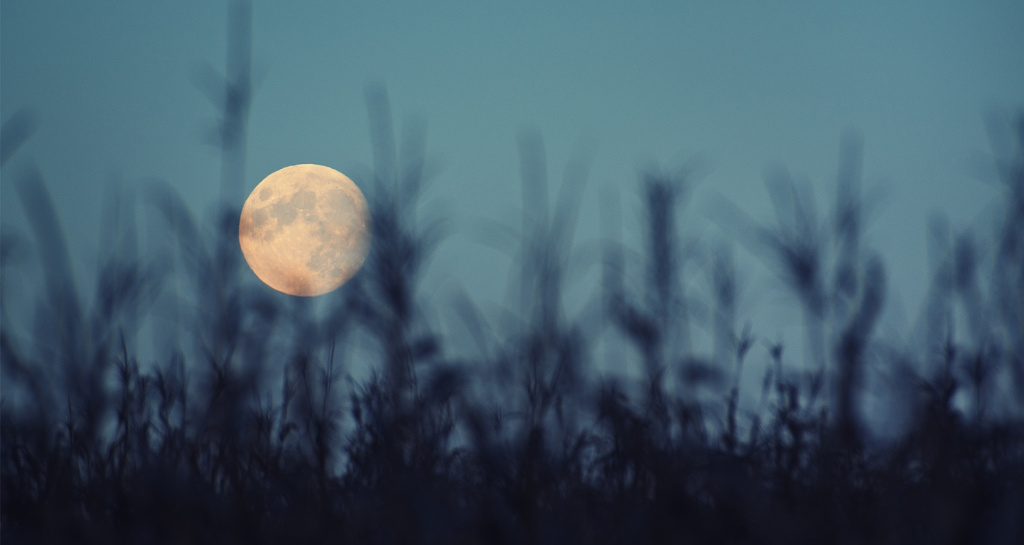
Crops, of course, do not all ripen simultaneously (fortunately for the farmer!). Corn is ready for harvesting in August, when it's "high as an elephant's eye."
September: Harvest moon
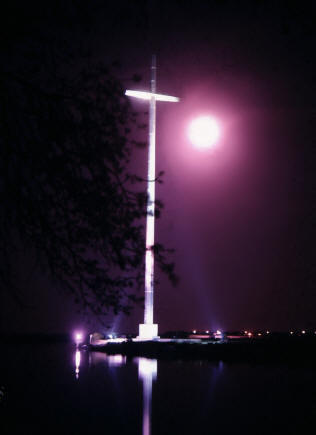
The full moon always rises at sunset, of course (opposite the setting sun, which is illuminating it full-on). And on average, each night after the actual full moon, it rises about 50 minutes later than the night before, leaving almost an additional hour of darkness between sunset and moonrise. However, the day after the Harvest moon, because of Earth's tilt this time of year, the moon rises only 30 minutes later than the night before. That makes this an ideal time to harvest crops, because work can continue after sunset for one or two days, illuminated by the light of the full (or nearly full) moon.
The rising Harvest moon has the reputation of being yellower than other moons. I suspect this originated in the days when fields were burned after harvesting, to fertilize the field for the next year's crops. Smoke in the air probably made the moon look more yellow to the folks in the adjacent fields.
Although the popular song quoted above probably hadn't thought it through, the time after harvest does, indeed, afford an opportunity for a little R&R, which might well include a chance for some long-delayed "lovin'".
2007's Harvest moon rose September 26.
October: Hunter's moon
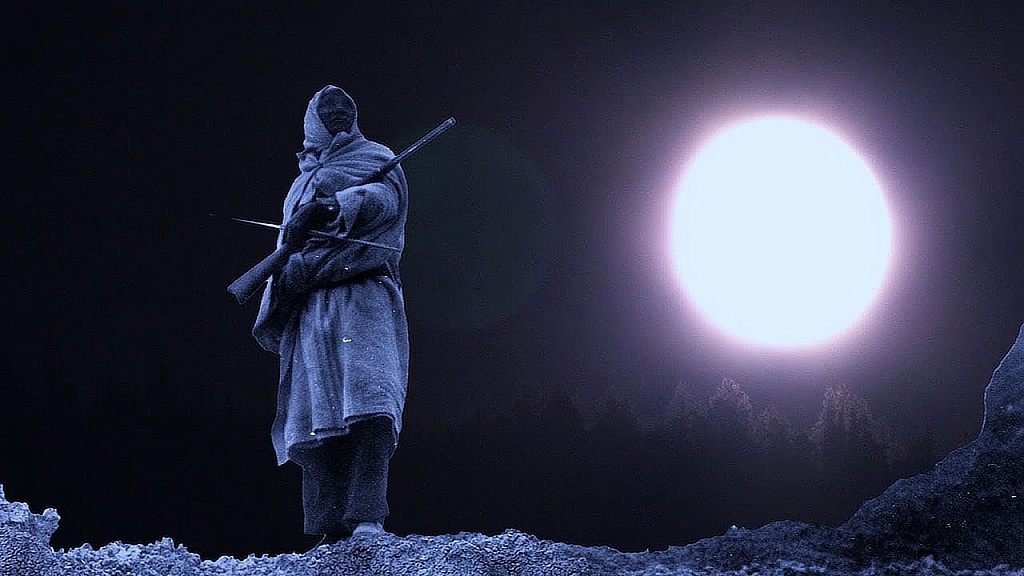
For the same reason as the Harvest moon, the time of the Hunter's moon gives two or three nights of near-continuous light since the Moon rises when, or shortly after, the Sun sets. Since animals are also active at this time, making a last-ditch effort to feed themselves before winter sets in, it's a good time for the hunters to catch as much meat as they can. 2007's Hunter's moon will rise October 26.
November: Snow moon
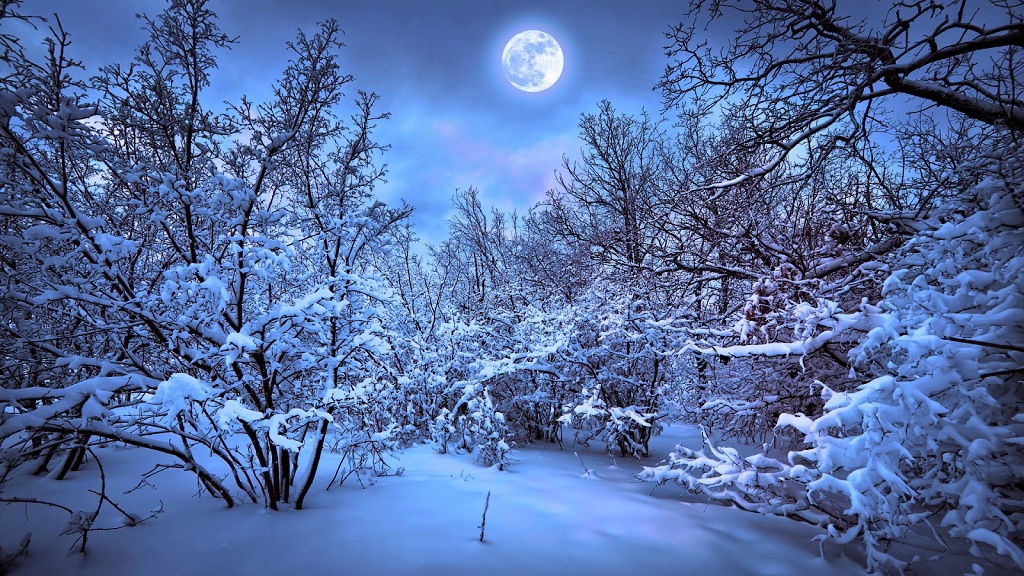
This marks the month of the first snows in most locations.
December: Cold moon
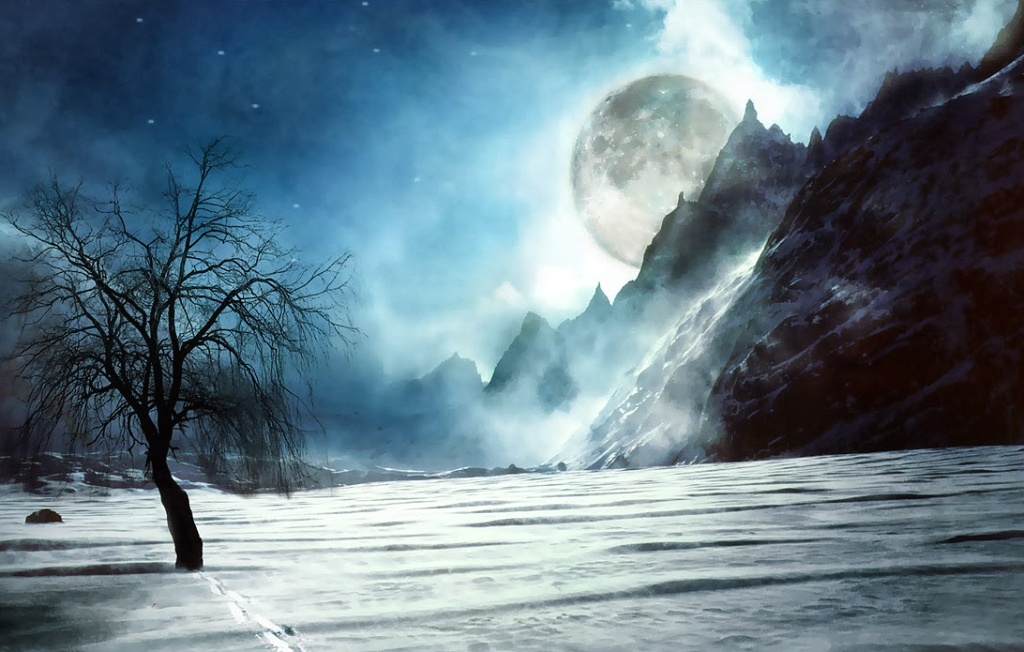
By now Winter has set in. No one is complaining of a lack of lovin' now; it's the only way to keep warm.
Once In A Blue Moon
We have listed twelve moons above…but there are 13 lunar months in a year. What happened to the extra month?
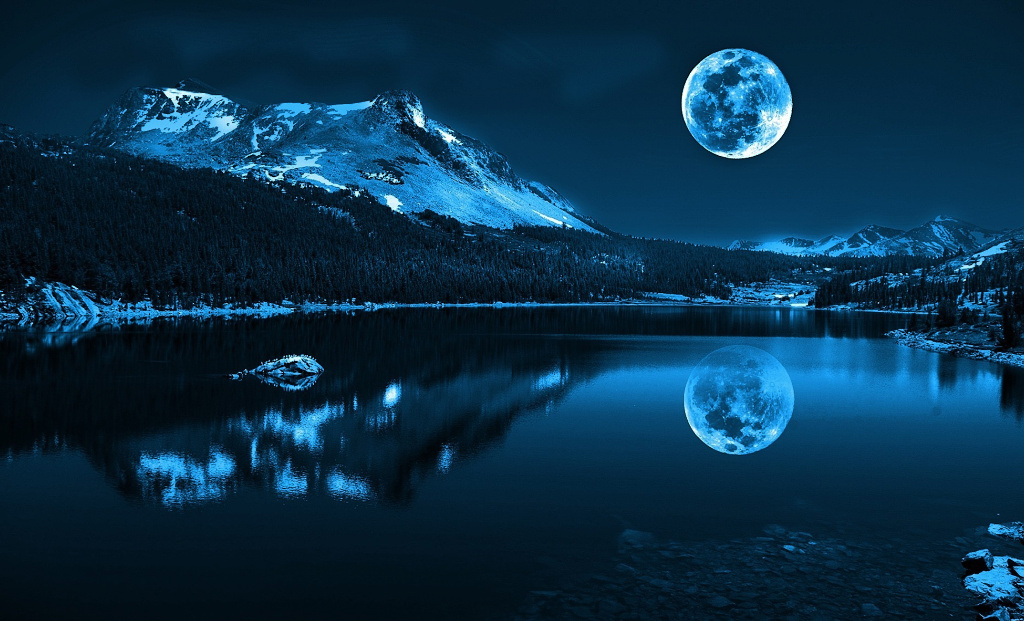
Well, it's generally called the Blue moon. It can happen any time during the year. In tribal societies, it would happen whenever the shaman decided the months had gotten out of sync with the sun—if the hares hadn't shown up in May, or the snows hadn't come by November. Then a Blue moon would be declared, and the following full moon would find things right again.
Modern cultures can't handle things so casually. The Farmers' Almanac, a venerable old annual periodical that was once de rigueur in homes across America, termed the third moon in a quarter (four months) of the year a "Blue moon". However, the March 1946 issue of Sky & Telescope magazine accidentally confused the issue by mistakenly reporting that a Blue moon was the second full moon in a single Calendar month. It was nearly sixty years before Sky & Telescope printed a retraction, by which time the mistaken definition had almost superseded the original. The S&T definition is now called a "Calendar Blue Moon" while the original FA definition remains as is.
By the way, the next real Blue moon will occur May, 2008. (A "quarter" is a season: January, February and March are the Winter quarter; April, May and June comprise Spring; July, August and September make up Summer, and October, November and December make up Spring. These are actually approximate, as the seasons don't start on the first of the month.) That will push the Hare moon into June.
It probably doesn't much matter, as long as you can get your lovin' more often than once in a Blue moon, and don't have to do without through January, February, June or July.





